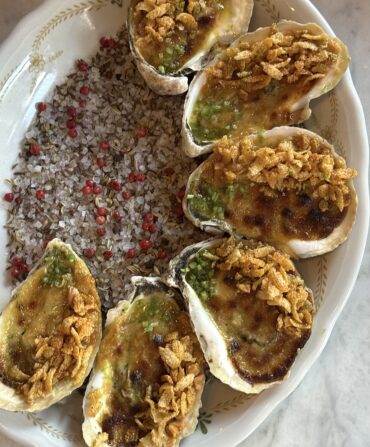Georgia fishermen haul in millions of pounds of shrimp and blue crabs each year. Recently, some have added a new catch that you’ll rarely if ever see on menus: the cannonball jellyfish, also known as the “jellyball,” a cabbage-sized creature common along the eastern seaboard—and on beaches in the summertime.

“It’s one of the top three fisheries in the state now,” says Pat Geer of the Georgia Department of Natural Resources. Georgia began offering experimental permits to a few fishermen in 2002, and only fully opened state waters to jellyfish trawlers in 2013. “Typically blue crabs are at number one and shrimp at two, but these jellyfish are giving the crabs a run for their money.”
Jellyfish are also earning money for processors like Golden Island International in Darien, Georgia, which prepares them for consumers in China and Japan. There are plenty of them in the sea, and they’ve long clogged both shrimp nets and industrial machinery. So why not reduce the population and make a living at the same time?
Yao-Wen Huang first asked that question in 1984, after swarms of cannonball jellyfish clogged two nuclear reactors in Florida. Born in Taiwan, the food science professor at the University of Georgia grew up eating dried jellyfish. “Before a big dinner, we’d eat a plate of cold cuts like smoked fish or roasted beef—along with jellyfish,” he says. “It’s really just there for its texture, which is a combination of crunch, elastic, and crisp. A little bit chewy, but not too chewy.”
He came up with a process that shortened the traditional drying time of a month to just a week, which made bulk jellyfish processing profitable for coastal businesses. At first, no one listened.
“‘This guy is crazy,’” Huang remembers his colleagues saying. “They called me the cannonball king. They were teasing me then, but I didn’t mind.” Decades later, shredded Georgia jellyfish top salads and appetizer plates thousands of miles from their native waters. “In China, they appreciate the quality,” Huang says. “The species over there are mostly much bigger, and the texture is not as firm. Also, of course, the product is from the United States and they market that. We have better food safety here.”
Meanwhile, manufacturers in China, Thailand, and Malaysia ship dried jellyfish to Asian grocery stores and restaurants in the United States. Couldn’t we build a domestic market for our own jellyfish? “It would be interesting,” Geer says. “I could see it working.”
So far, though, no one has risen to the opportunity. Still the jellyfish harvest has been a blessing for shrimpers looking for a supplemental harvest. “We’re going to make some money for fishermen and coastal areas,” Huang says. “Water temperatures are rising, too. That means jellyfish numbers will just keep growing.”







